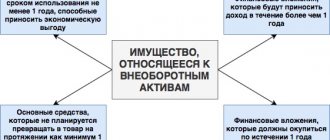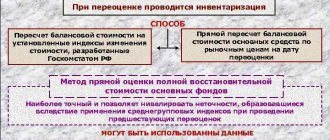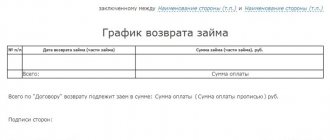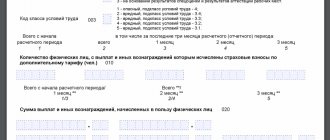Situation
The organization had on its balance sheet shares of another enterprise acquired several years ago. The shares at their original cost were listed on account 58 “Financial Investments”.
In 2006, the organization transferred shares as a contribution to the authorized capital of another enterprise. At the same time, the shares were assessed by an independent appraiser, as a result of which their market value increased.
The accountant had the following questions: What accounting entries need to be made in connection with the revaluation and transfer of shares? Is the difference between the original cost of shares and their value after revaluation subject to income tax?
The presence and movement of investments in shares of other enterprises are taken into account in account 58 “Financial Investments”, sub-account “Shares and Shares”. The accounting procedure for financial investments is regulated by PBU 19/02 “Accounting for financial investments.”
Financial investments are accepted for accounting at their original cost, which includes the actual costs of their acquisition, with the exception of VAT and other refundable taxes (except for cases provided for by the legislation of the Russian Federation on taxes and fees) ( see paragraphs 8 and 9 of PBU 19/02 ).
Let us assume that in this situation the initial cost of shares of another company acquired by the organization is 80,000 rubles. Then the following entry is made in the organization’s accounting:
Debit 58/"Shares" - Credit 76/"Settlements with the seller of shares" - 80,000 rubles - acquired shares are taken into account.
Accounting press and publications
“Financial and accounting consultations”, 2007, N 10
REVALUATION OF SECURITIES. PERMANENT AND TEMPORARY DIFFERENCES
AND THEIR IMPACT ON REPORTING
According to clause 20 of PBU 19/02, financial investments for which the current market value can be determined in the prescribed manner are reflected in the financial statements at the end of the reporting year at the current market value by adjusting their valuation as of the previous reporting date. The organization can make this adjustment monthly or quarterly.
———————————————————————————————— Accounting Regulations “Accounting for Financial Investments” PBU 19/02 approved by Order of the Ministry of Finance of Russia dated December 10, 2002 N 126n.
The difference between the assessment of financial investments at the current market value as of the reporting date and the previous assessment of financial investments is attributed to the financial results of a commercial organization (as part of other income or expenses) or an increase in income or expenses of a non-profit organization in correspondence with the account of financial investments.
In accordance with paragraph 24 of Art. 251 of the Tax Code of the Russian Federation, income in the form of a positive difference obtained from the revaluation of securities at market value is not taken into account when determining the tax base for the organization’s profit tax. Likewise, losses from the revaluation of securities are not accepted for profit tax purposes.
The procedure for determining the current market value for accounting purposes is not established by accounting regulations and is subject to regulation of the accounting policy of the enterprise. For example, you can propose the following version of the methodology for revaluing financial investments, by which the market value is determined.
The current market value is the market price calculated by the organizer of trading on the securities market as of the last reporting date of the reporting period. To determine the market price, prices published by the main trade organizers are accepted.
If the trade organizer did not display the market and (or) weighted average price in the quotes, then the following procedure is used to calculate the market value:
— if 10 or more transactions were made during a trading day in the last month of the reporting quarter, the market price is calculated as the weighted average price of one security based on the transactions completed during the trading day;
— the market price is calculated as the weighted average price of one security based on the last 10 transactions for the last month of the reporting quarter;
— if during the last month of the reporting quarter less than 10 transactions were made through the trade organizer (including in the absence of transactions), the market price is calculated as the weighted average price of one security for the last 10 transactions of the reporting quarter;
— if during the reporting quarter less than 10 transactions were made through the trade organizer:
market value is the latest market price or the weighted average price calculated by the trade organizer for the previous quarter,
market value is calculated as the weighted average price of one security based on the last 10 transactions in the previous quarter.
When calculating the market price, it is necessary to take into account that the total volume of completed transactions must be at least 300,000 rubles.
You can also refer to numerous clarifications of the Russian Ministry of Finance regarding the determination of the market value of securities for profit tax purposes, for example, Letter dated August 2, 2007 N 03-03-06/2/147 on the issue of determining the market price of securities traded on the organized market .
In accordance with paragraph 5 of Art. 280 of the Tax Code of the Russian Federation, the market price of securities traded on an organized market is recognized as the actual price of sale or other disposal of securities if this price is in the interval between the minimum and maximum prices of transactions (price interval) with the specified security registered by the organizer of trade on the securities market on the date of the relevant transaction.
If there is no information about the price interval from the trade organizers on the date of the transaction, the price interval on the date of the nearest trading that took place before the day of the corresponding transaction is accepted, if trading in these securities was carried out by the trade organizer at least once during the last 12 months. According to the Procedure for calculating the market price of issue-grade securities and investment shares of mutual investment funds admitted for circulation through trade organizers, when calculating the market price, transactions made on the basis of applications addressed to all trading participants are taken into account (for securities included in the quotation lists, as well as admitted to circulation through the trade organizer without going through the listing procedure).
———————————————————————————————— Approved by Resolution of the Federal Securities Commission of Russia dated December 24, 2003 N 03-52/ps.
Thus, if there is information from the trade organizer about both addressed and non-addressed transactions made on the same day with the same security, for corporate profit tax purposes, you should use information on the price range for non-addressed transactions, since it is in this case is a priority. If no-address transactions were made within the last 12 months, then information on the price range for address transactions can be used.
Permanent and temporary differences and their impact
for financial statements
According to PBU 18/02, permanent differences are understood as income and expenses that form the accounting profit (loss) of the reporting period and are excluded from the calculation of the tax base for income tax for both the reporting and subsequent reporting periods.
———————————————————————————————— Accounting Regulations “Accounting for Income Tax Calculations” PBU 18/02 approved by Order Ministry of Finance of Russia dated November 19, 2002 N 114n.
Temporary differences are understood as income and expenses that form accounting profit (loss) in one reporting period, and the tax base for income tax in another or other reporting periods.
According to clause 10 of PBU 18/02, temporary differences, depending on the nature of their impact on taxable profit (loss), are divided into deductible and taxable.
Deductible temporary differences in the formation of taxable profit (loss) lead to the formation of deferred income tax, which should reduce the amount of tax payable to the budget in the following reporting period or in subsequent reporting periods.
Taxable temporary differences in the formation of taxable profit (loss) lead to the formation of deferred income tax, which should increase the amount of tax payable to the budget in the following reporting period or in subsequent reporting periods.
At first glance, all this seems understandable, with the exception of the most important starting point - whether transactions with securities will in the future form the tax base for income tax (increase it or decrease it). It is on this circumstance that the reflection of the revaluation of securities in the statements will depend (in the full amount of the revaluation or minus deferred tax liabilities).
If the shares are expected to continue to be taxable, temporary differences and deferred tax liabilities (DLT) should be recognized. In the balance sheet, the amount of revaluation will be “decomposed” into two components - the amount of revaluation minus the contingent liability for income tax, which is allocated to retained earnings, and the amount of deferred tax liability.
If the shares will no longer participate in taxable turnover, it is necessary to recognize permanent differences and, accordingly, permanent tax liabilities. In the balance sheet, the entire revaluation amount is included in retained earnings.
What could be the future fate of the shares?
Shares can be sold, paid as dividends, or distributed among shareholders upon liquidation of the company. The intentions of the administration or shareholders of the enterprise regarding the future fate of these shares are a sealed secret for the accountant.
To illustrate, consider a hypothetical example. Let’s say that on the balance sheet of company “A” there are 1000 shares of company “B”, traded on the securities market, worth 1 ruble. each. In accordance with PBU 19/02, at the end of the reporting year, shares were revalued taking into account the current market value. As a result of the revaluation, the cost of one share increased to 9 rubles.
Option 1: Recognition of temporary differences. In this case, the reflection of these business transactions in the accounting records of company “A” is as follows:
D 58 “Financial investments” - K 91 “Other income and expenses” - 8,000 rubles. (8 rubles/piece x 1000 pieces) - reflects the amount of additional valuation of shares;
D 91 - K 99 “Profits and losses” - 8000 rubles. — accounting profit from the revaluation of shares is reflected;
D 99 - K 68 “Calculations for taxes and fees” - 1920 rubles. (24% x 8000 rub.) - reflects the conditional income tax expense;
D 68 - K 77 “Deferred tax liabilities” - 1920 rubles. — deferred tax liability is reflected.
As a result, the balance sheet of Company A after the revaluation of shares will look as follows (see Table 1).
Table 1
rub.
———————————————————————————————————T————————————— —————————————————————————————————¬ | Active | Passive | +—————————————————T—————————————————+————————————— ————————T———————————————————————+ | At the beginning of the year | End of year | At the beginning of the year | End of year | +————————————T————+————————————T————+————————————— ———T————+————————————————T——————+ |Long-term|1000|Long-term|9000|Unallocated|1000|Unallocated| 7080| |financial | |financial | |profit | |profit | | |attachments | |attachments | | | | | | +————————————+————+————————————+————+————————————— ———+————+—————————————————+——————+ | | |IT | — |IT | 1920| +—————————————————+—————————————————+————————————— ———+————+————————————————+—————+ |Total: 1000| 9000| 1000| 9000| L—————————————————+—————————————————+————————————— ————————+—————————————————————————
When securities are disposed of from the balance sheet of Company A, the amount of temporary differences is repaid, and deferred tax liabilities are written off to the profit and loss account.
In the situation under consideration, the revaluation of securities (shares) of third parties led to the formation of income in the form of a positive difference, which is reflected in accounting as the debit of account 58 in correspondence with account 91 (PBU 19/02, Instructions for the use of the Chart of Accounts) in the amount of the difference between the valuation of shares at the current market value at the reporting date and the previous valuation. In this case, for the purposes of PBU 18/02, a conditional income tax expense is reflected in the amount of 24% of the difference.
———————————————————————————————— Instructions for the use of the Chart of Accounts for accounting financial and economic activities of organizations, approved by Order of the Ministry of Finance of Russia dated October 31, 2000 N 94n.
Further, the cost of shares can be written off as expenses for tax purposes in future reporting periods. As a result, this operation will have an impact on the financial result during the period of sale of shares, i.e. in another or other reporting periods in relation to the period of the revaluation. At the same time, in accounting, when securities are revalued at their market value, the financial result of the period of these business transactions will change. Thus, the tax difference created in the organization’s accounting in connection with the revaluation of securities can be classified as temporary.
The revaluation of securities is not taken into account in tax accounting in the current period and does not affect the tax base of the current period. If shares are sold in the future, their value, taking into account revaluation, will be recognized as an expense only in accounting. Consequently, the contingent income tax expense in the future will be adjusted to the value of the disposed securities, taking into account the amount of the revaluation. In this case, a taxable temporary difference has arisen.
Deferred tax liabilities are equal to the amount determined as the product of taxable temporary differences that arose in the reporting period and the income tax rate established by the legislation of the Russian Federation on taxes and fees and in effect on the reporting date. In accounting, IT is reflected in the debit of account 68 in correspondence with account 77 (clause 18 of PBU 18/02, Instructions for using the Chart of Accounts).
Option 2: Recognize permanent differences. There is another point of view, which considers these tax differences as permanent. This point of view is set out in the Methodological Recommendations for verifying income taxes and obligations to the budget when conducting an audit and providing related services, approved by the Ministry of Finance of Russia on April 23, 2004, and is based on the following.
Adjustment of the value of securities to the market level is considered outside the context of the future disposal of the security. Since without sale, no income and expenses on securities are recognized in tax accounting, therefore, all income and expenses recognized in accounting constitute permanent differences. The presence of a security on the balance sheet and its disposal are considered in this context as events independent from each other and all tax consequences of these events are taken into account separately.
In relation to the option under consideration, the reflection of business transactions in the accounting records of company “A” will be as follows:
D 58 - K 91 - 8000 rub. — reflects the amount of additional valuation of shares;
D 91 - K 99 - 8000 rub. — accounting profit from the revaluation of shares is reflected;
D 99 - K 68 - 1920 rub. — the conditional income tax expense is reflected;
D 68 - K 99 - 1920 rub. — a permanent tax liability is reflected;
D 99 - K 84 - 8000 rub. — reflects the net profit from the revaluation of shares as a result of balance sheet reformation.
What the balance sheet of Company A will look like after the revaluation of shares is shown in Table. 2.
table 2
rub.
———————————————————————————————————T————————————— —————————————————————————————————¬ | Active | Passive | +—————————————————T—————————————————+————————————— ————————T———————————————————————+ | At the beginning of the year | End of year | At the beginning of the year | End of year | +————————————T————+————————————T————+————————————— ———T————+————————————————T——————+ |Long-term|1000|Long-term|9000|Unallocated|1000|Unallocated| 9000| |financial | |financial | |profit | |profit | | |attachments | |attachments | | | | | | +————————————+————+————————————+————+————————————— ———+————+————————————————+—————+ |Total: 1000| 9000| 1000| 9000| L—————————————————+—————————————————+————————————— ————————+—————————————————————————
Subsequent disposal of securities in other reporting periods will lead to the repeated formation of the same mirror permanent differences. When a security is disposed of, the expense in accounting is equal to the book value, taking into account all previously carried out revaluations. In this case, the expense recognized for tax purposes will be equal to the original cost of the share without taking into account revaluations. As a result, when a security is disposed of, the entire amount of permanent differences previously recognized on it will need to be recognized again as a permanent difference with the opposite sign. In the event of further sale (sale) of securities, temporary differences must be recognized and reflected in accounting and reporting.
Dividends paid on shares of third parties
With dividends the situation is more complicated. An analysis of the legislation, its explanations from the Ministry of Finance of Russia, law enforcement practice, as well as existing positions taken by various consultants, revealed the presence of two approaches regarding the tax consequences of a company paying dividends with property (shares of third parties).
Based on the first approach, a company paying dividends with shares of third parties does not have any tax consequences in connection with the transfer of shares as dividends into the ownership of shareholders (with a gratuitous transfer of property, the taxpayer does not receive an economic benefit, and therefore does not have income taken into account for profit tax purposes). In accounting, the accrual and payment of dividends is reflected by the entries: D 84 - K 75 “Settlements with founders”, D 75 - K 58.
Let's continue our example: at the meeting of shareholders it was decided to accrue dividends from the generated profits and pay dividends in the form of transferring shares of third parties on the balance sheet of company A in full. In accounting, related business transactions are reflected as follows (the difference in revaluation was previously recognized as temporary):
D 77 - K 99 - 1920 rub. — the deferred tax liability has been repaid;
D 84 - K 75 - 9000 rub. — accrual of dividends is reflected;
D 75 - K 58 - 9000 rub. — payment of dividends in shares of third parties is reflected.
Thus, if there is a decision to pay dividends, retained earnings must be restored to the full amount of the revaluation.
As a result, the balance sheet of company “A” after paying dividends will look like this (see Table 3).
Table 3
rub.
———————————————————————————————————T————————————— —————————————————————————————————¬ | Active | Passive | +—————————————————T—————————————————+————————————— ————————T———————————————————————+ |At the beginning of the period| At the end of the period| At the beginning of the period | At the end of the period | +————————————T————+————————————T————+————————————— ———T————+————————————————T——————+ |Long-term|9000|Long-term| 0|Unallocated|7080|Unallocated| 0| |financial | |financial | |profit | |profit | | |attachments | |attachments | | | | | | +————————————+————+————————————+————+————————————— ———+————+—————————————————+——————+ | | |IT |1920|IT | 0| +—————————————————+—————————————————+————————————— ———+————+————————————————+—————+ |Total: 9000| 0| 9000| 0| L—————————————————+—————————————————+————————————— ————————+—————————————————————————
According to the second approach, a company paying dividends in shares of third parties faces tax consequences associated with considering these payments as property sold for compensation as an offset against obligations. In this case, the payment of dividends is considered as a sale or other disposal of securities.
In accordance with paragraph 2 of Art. 280 of the Tax Code of the Russian Federation, the taxpayer’s income from the sale or other disposal of securities (including redemption) is determined based on the price of the sale or other disposal of the security, as well as the amount of interest (coupon) income accumulated and paid by the buyer to the taxpayer and paid to the taxpayer by the issuer (issuer of the bill) . Expenses upon the sale (or other disposal) of securities, including investment units of a mutual investment fund, are determined based on the purchase price of the security (including the costs of its acquisition), the costs of its sale, the amount of discounts on the estimated value of investment shares, the amount of accumulated interest (coupon) income paid by the taxpayer to the seller of the security.
Thus, when an organization sells shares traded on an organized securities market, it may have a taxable base for profit tax purposes, determined as the difference between the sales price and the value of these shares reflected in tax accounting, taking into account the costs of their sale.
Tax accounting rules do not provide for the possibility of revaluing the value of securities. Consequently, until the moment of disposal, they are reflected in the tax registers at a cost based on the amount of expenses actually incurred for their acquisition.
The difference between the sales price and the value of these shares reflected in tax accounting, taking into account the costs of their sale for the purposes of PBU 18/02, is constant and leads in accounting to the emergence of a permanent tax liability (PNO) in the amount of 24% of the amount. This difference is an income tax, reduces the net profit of the current period and is reflected in the following posting: D 99 - K 68.
Returning to the example, let’s consider the second situation, taking into account the tax obligations that have arisen. The following entries must be made in the accounting records of company “A”:
D 84 - K 75 - 9000 rub. — dividends accrued;
D 75 - K 58 - 9000 rub. — payment of dividends in shares of third parties is reflected;
D 77 - K 68 - 1920 rub. — IT has been repaid (if the differences are determined to be temporary);
D 99 - K 68 - 1920 rub. [24% x (9000 rub. - 1000 rub.)] - PNO is reflected (in case the differences are determined to be constant).
Thus, the payment of dividends in shares (their book value is 9,000 rubles) in this case is not covered by the available amount of net profit (it amounts to 7,080 rubles due to income tax). This means that company “A” needs to attract other sources to cover the loss arising in this situation.
As a result, the balance sheet of company “A” after payment of dividends in both cases will look as shown in table. 4.
———————————————————————————————— In both situations discussed, shareholders receiving income in the form of dividends have tax consequences for income tax and personal income tax.
Table 4
rub.
———————————————————————————————————T————————————— —————————————————————————————————¬ | Active | Passive | +—————————————————T—————————————————+————————————— ————————T———————————————————————+ |At the beginning of the period| At the end of the period| At the beginning of the period | At the end of the period | +————————————T————+————————————T————+————————————— ———T————+————————————————T——————+ |Long-term|9000|Long-term| 0|Unallocated|7080|Unallocated|(1920)| |financial | |financial | |profit | |profit | | |attachments | |attachments | | | | | | +————————————+————+————————————+————+————————————— ———+————+—————————————————+——————+ | | |IT |1920|IT | 0 | +—————————————————+—————————————————+————————————— ———+————+—————————————————+——————+ | |Debt on| — |Debt on| 1920 | | |taxes and fees| |taxes and fees| | +—————————————————T—————————————————+————————————— ———+————+————————————————+—————+ |Total: 9000| 0| 9000| 0 | L—————————————————+—————————————————+————————————— ————————+———————————————————————— Thanks to the above example, it is clear how the professional judgment of an accountant affects the financial position of the enterprise, i.e. e. on its balance sheet, or more precisely, on the size of its net assets. In conclusion, we note that the legislation does not contain a general definition of the concept of “net assets” in relation to all legal forms of commercial organizations. At the same time, the Civil Code of the Russian Federation and federal laws on certain organizational and legal forms of legal entities that are commercial organizations contain reference rules for the procedure for determining the value of net assets. General partnership and limited partnership. According to paragraph 2 of Art. 74 of the Civil Code of the Russian Federation, if, as a result of losses incurred by the partnership, the value of its net assets becomes less than the size of its share capital, the profit received by the partnership is not distributed among the participants until the value of the net assets exceeds the amount of capital. Thus, the right of a general partner to receive a portion of the profit is made dependent on the values of the share capital and the value of the net assets of the partnership. Consequently, the legal status of a general partner varies depending on the value of his net assets. A general partner in a limited partnership also does not have the right to receive part of the profit if the value of the share capital exceeds the value of the net assets of the partnership. Limited Liability Company. According to paragraph 4 of Art. 90 of the Civil Code of the Russian Federation, if at the end of the second or each subsequent financial year the value of the company’s net assets is less than the authorized capital, it is obliged to announce a reduction in its authorized capital and register this operation in the prescribed manner. A company whose net asset value becomes less than the minimum amount of authorized capital determined by law is subject to liquidation. In accordance with Federal Law No. 14-FZ of February 8, 1998 “On Limited Liability Companies,” the amount of increase in the authorized capital should not exceed the difference between the value of the company’s net assets and the amount of its authorized capital and reserve fund. Joint-Stock Company. Clause 4 of Art. 99 of the Civil Code of the Russian Federation establishes that a company whose net asset value at the end of the second and each subsequent financial year is less than its authorized capital is obliged to declare and register its decrease in the prescribed manner. If the value of these assets becomes less than the minimum amount of authorized capital determined by law, the company is subject to liquidation. E.V. Gavrilova Senior Consultant of the Accounting Consulting Department I.D. Yutskovskaya Director of the Accounting Consulting Department Signed for printing 09/25/2007 ————
Initial assessment of financial investments
The initial assessment of financial investments is made at the original cost. It refers to actual acquisition costs, excluding refundable taxes.
The actual costs of acquiring assets mean:
- The fees paid to the seller under a sales contract.
- Costs of information and consulting services.
- Interest paid to intermediaries.
- Payments on loans and borrowings, if they were taken out for the acquisition of financial assets, provided that this does not contradict the norms of PBU 10/99 for accounting for expenses and PBU 15/2008 for accounting for loans and credits.
- Other costs that are actually related to the acquisition of assets.
Obtaining assets with loan funds is associated with borrowing costs, which must be accounted for as other expenses in accordance with PBU 10/99 and PBU 15/2008.
There is a certain list of costs that are not included in the actual cost of purchasing financial investments:
- General expenses.
- Consulting costs on financial investments that were not made.
- The difference in rates for investments that were paid after registration.
- Payments on loans that were accrued after the asset was registered on the books.
The listed costs must be included among other expenses and reflected in account 91-2.
Securities accounting: we reveal the terms and detail the postings
Algorithms for accounting for securities (CS) must be considered in conjunction with the official concept of these accounting objects.
The term “security” is deciphered by Art. 142 of the Civil Code of the Russian Federation as:
- a document that meets the requirements of the law and certifies the rights of its owner;
- obligations (or other rights) enshrined in the act of the entity that issued the securities.
The Civil Code does not contain an exhaustive list of Central Banks, including:
- shares, bonds, checks, bills of lading, bills of exchange, mortgages, investment shares of mutual funds;
- as well as other central banks, if they are so named in the law or recognized as such in accordance with the procedure established by law.
The accounts and transactions used in securities accounting depend on the type of securities and the operations performed with it, purpose, purpose of purchase and other nuances. Eg:
- Dt 58 Kt 51 - acquisition by the Central Bank firm of other companies for money;
- Dt 91 Kt 58 - sale (redemption) of securities;
- Dt 58 Kt 91 - increase in share value;
- Dt 76 Kt 51 - payment of bonds;
- Dt 76 Kt 91 - accrual of income on the bond.
ConsultantPlus experts explained in detail how a lender takes into account transactions under a securities loan agreement when taxing profits. To do everything correctly, get trial access to the system and go to the Ready solution. It's free.
The materials on our website will tell you about the postings used to reflect various transactions in accounting:
- “Typical accounting entries for VAT: tax accounting”;
- “Posting debit 62 and credit 62, 91, 76, 90 (nuances).”
We will talk about the accounting features of certain types of securities in the following sections.
Annual revaluation of other people's shares on the balance sheet of the enterprise
According to supporters of this position, when revaluing financial investments, leading to the formation of income in accounting, taxable temporary differences are formed and, accordingly, deferred tax liabilities. Upon further revaluation or disposal of the asset, the deferred tax liability is adjusted. Let's return to our example.
In this case, the accountant makes the following entries: Debit 58, Credit 91 - 1000 rubles. ((2 rubles - 1 ruble) x 1000 pcs.) - reflects the difference formed as a result of the revaluation of financial investments; Debit 91, Credit 99 - 1000 rub. — accounting profit is reflected as a result of revaluation; Debit 99, Credit 68 - 240 rub. (RUB 1,000 x 24%) - reflects the conditional income tax expense; Get the full text Debit 68, Credit 77 - 240 rub. (RUB 1,000 x 24%) - deferred tax liabilities are reflected; Debit 99, Credit 84 - 760 rub. (1000 rub.
Date: 01.04.2011 13:33Author: didal Registration: 10.08.2006Messages: 1306 As far as I understand, the question was about the possibility of increasing the value (according to accounting data) of the organization’s long-term financial investments (possibly to increase the value of net assets without payment of additional property tax), and not about increasing the authorized capital of this organization or another legal entity - the issuer of securities on the balance sheet of this very organization. In addition, I do not agree that it is impossible to convert shares into shares of the same category (type) with a higher par value using additional capital formed as a result of the revaluation of fixed assets carried out by the joint-stock company on its own initiative. In this case, you will have to pay a state fee for registering the issue of securities and the shareholders will supposedly have taxable income.
With uv. lexander Date: 03/31/2011 11:03 Author: AL1 Registration: 03/15/2010 Messages: 24 Hey, corporate people... Does anyone know anything on this issue, huh? Is it really possible that “nobody here has ever overvalued the shares?” Date: 03/31/2011 18:02 Author: didal Registration: 08/10/2006 Messages: 1306 The last time I encountered something like this was at the end of 2006. The PA hired an auditor to give an opinion (they decided to take insurance) and, of course, an appraiser. As a result, the LLC increased the book value (according to accounting data) of the shares several times in accordance with the appraiser’s report.
The difference, if my memory serves me correctly, was attributed to profit after taxation. That is, according to accounting data. However, the value of shares on the LLC’s balance sheet increased, but for tax purposes remained the same.
| Dear visitors! The site offers standard solutions to problems, but each case is individual and has its own nuances. |
| If you want to find out how to solve your particular problem, call toll-free ext. 504 (consultation free) |
Consequently, transactions for the sale of shares and shares should be reflected in the following entries: D 91 K 58 - for the amount of the book value of the shares; D 62 K 91 - for the amount of the contractual value of the financial investments being sold; D 51 K 62 - for the amount of funds actually received If a reserve was previously created for the depreciation of investments in securities for the shares or shares being sold, it must also be written off. Example 2. An organization purchased shares with a total value of 100,000 rubles in August.
Types of securities
In accounting, for the purposes of revaluation, securities are divided into:
- financial investments for which the current market value can be determined (securities listed (admitted for circulation) on the organized securities market);
- financial investments for which the current market value is not determined (securities that are not quoted (not admitted to circulation) on the organized securities market).
Depending on what type of security the security is, the rules for current revaluation and the reflection of its results will be different (revaluation (increase in value), markdown (decrease in value) or the formation of an impairment reserve).
This procedure follows from paragraphs 18–22 and section VI of PBU 19/02.
Preparatory work before revaluation
In order to carry out a revaluation, the organization must carry out preparatory work - for example, check the presence of the fixed assets themselves that are subject to revaluation.
The decision to conduct a revaluation is formalized in the appropriate administrative document. Its use is mandatory for all services of an economic entity that will be involved in the revaluation.
Revaluation is carried out at current (replacement) cost by indexation or direct recalculation at confirmed market prices.
In order to determine the current (replacement) cost, you must use:
- data on similar products received from manufacturing organizations;
- information on price levels available from statistical bodies, trade inspectorates and organizations;
- information on price levels published in the media and specialized literature;
Important
Revaluation is carried out at current (replacement) cost by indexation or direct recalculation at confirmed market prices (clause 15 of PBU 6/01).
From January 1, 2011, by order of the Ministry of Finance of Russia dated December 24, 2010 No. 186n, changes were made to paragraph 49 of the Regulations on accounting and financial reporting in the Russian Federation (approved by order of the Ministry of Finance of Russia dated July 29, 1998 No. 34n), paragraphs 43 — 47 Instructions No. 91n. According to these innovations, revaluation of fixed assets should be carried out no more than once a year and at the end of the reporting period. Previously, it had to be carried out at the beginning of the reporting period (clause 49 of the “Regulations on accounting and reporting in the Russian Federation”, approved by order of the Ministry of Finance of Russia dated July 29, 1998 No. 34n).
Initial cost
Their monetary value, confirmed by the general agreement of the company’s founders, is considered as the initial cost contributed to the contribution to the established capital of the enterprise.
The initial value of financial investments that were received free of charge, as securities, is recognized as:
- Current market value at the time of entry into the reporting documents. Where the definition of market value means the price calculated in accordance with the established regulations.
- The total amount of money that a company could potentially receive from the sale of securities at the time they are recorded in the reporting documents. Such securities do not require calculation of market value.
The initial cost of investments received under a purchase and sale agreement is recognized as the cost of assets based on their similar prices. The primary cost of investments made towards the contribution of a partnership organization under a simple partnership agreement is recognized as the financial assessment agreed upon in this agreement.
If the securities are not the property of the enterprise, but provide for the right of use or disposal, according to the terms of the agreement, then they are accepted for accounting valuation under this agreement.







